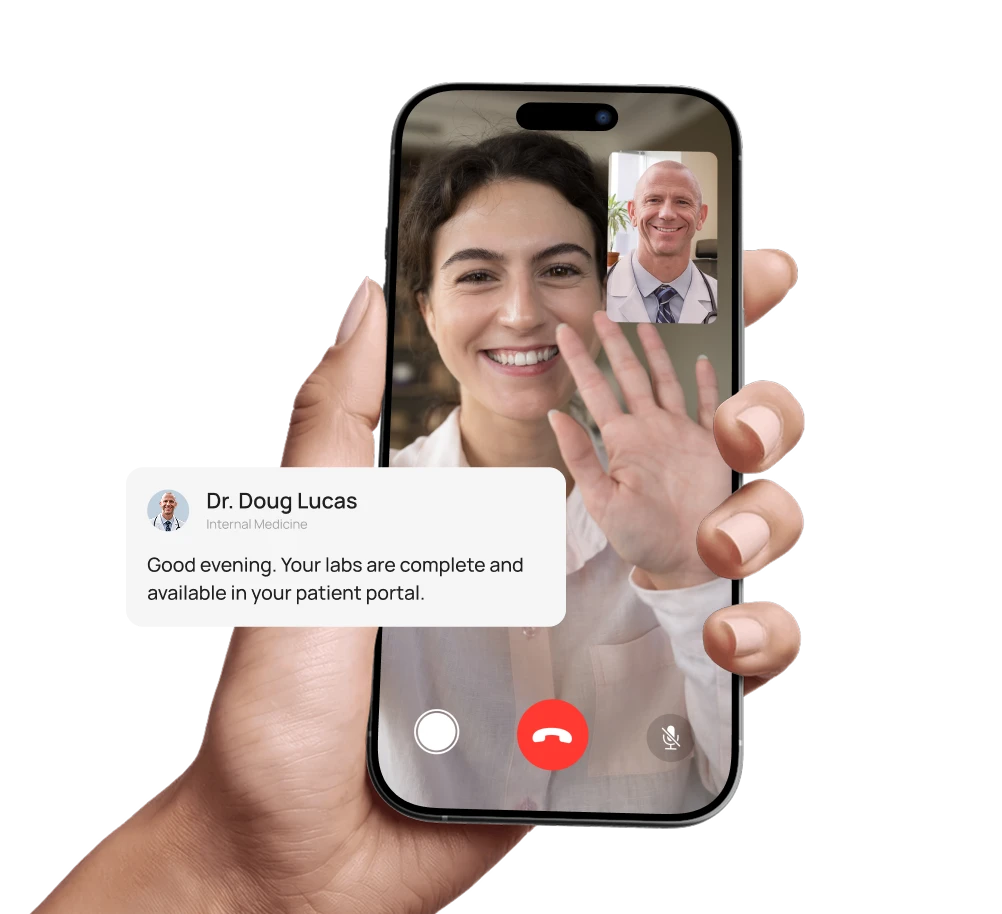Join 745,000+ members and counting
Diagnosis
Urgent evaluation is crucial to identify your condition early and prevent complications
Medication
Prescription treatments are tailored to your specific condition, ensuring effective relief
Prescription
Licensed providers can send prescriptions to your local pharmacy within an hour, day or night
Lab Testing
Accurate testing, if needed, can confirm your diagnosis and guide the best course of treatment

How It Works
Feeling better starts now!
Understanding Rashes
Rashes are a common skin condition characterized by red, itchy, and inflamed patches of skin. They can be caused by a variety of factors, including allergies, infections, and skin irritants. While some rashes may go away on their own, others may require medical attention.
A licensed health provider can help determine the underlying cause of your rash and prescribe treatment options such as topical creams, oral medications, or lifestyle changes to manage your symptoms and prevent the rash from recurring.
Skip the waiting room and start treatment now.

Medications Prescribed for Rashes
Your doctor is online and ready to see you
Talk to a DoctorOur Patients Are Our Top Priority
See why real patients choose LifeMD.
Common Questions About Rashes
What does a heat rash look like?
A heat rash, also known as miliaria or prickly heat, typically presents as small red bumps on the skin that are often clustered together and have a patchy appearance. The affected skin may feel hot, irritated, and itchy. Heat rash is commonly found in areas where sweat ducts are blocked, such as the neck, chest, back, or groin. It’s typically associated with hot and humid weather, or situations in which sweat isn’t able to fully evaporate.
While heat rash is usually harmless and resolves on its own by cooling or drying the skin, it's important to consult with a licensed health provider if the rash persists, worsens, or is accompanied by other symptoms.
What does a COVID rash look like?
A COVID rash can present in a variety of ways. For instance, it may appear as small red or purple spots on the skin. It can also manifest as a widespread rash with hive-like lesions that may be itchy or painful. Keep in mind that the appearance and severity of a COVID rash can vary from person to person – and not everyone with COVID-19 develops a rash.
Are rashes contagious?
Rashes themselves are not usually contagious, as they’re often a result of factors such as allergies, irritants, infections, or underlying medical conditions. However, some rashes caused by infectious agents, such as certain viral or fungal infections, can be contagious and may spread from person to person through direct contact or airborne droplets.
Identifying the underlying cause of the rash is essential in determining if it’s contagious or not. If the rash is in fact contagious, precautions such as frequent handwashing, avoiding sharing personal items like towels or clothing, and covering the affected area with a clean bandage, can help prevent the spread of the rash.
What foods can cause a rash?
Food allergies or sensitivities can trigger an immune response in the body, leading to various skin symptoms. Common food allergens that may cause a rash include cow's milk, eggs, peanuts, tree nuts, soy, wheat, fish, and shellfish. Additionally, some food additives, preservatives, and artificial ingredients found in processed foods can also cause skin reactions in people with sensitivities.
In some cases, the rash may present as hives, eczema, or other types of dermatitis. If you suspect that a particular food may be causing a rash or skin reaction, be sure to consult with a licensed healthcare provider.
Can certain medications cause a rash?
Yes, certain medications can cause a rash or skin reaction as a side effect. Skin rashes caused by medications are known as drug-induced rashes or drug eruptions. Common medications that can cause a rash include antibiotics (such as penicillin and sulfa drugs), nonsteroidal anti-inflammatory drugs (NSAIDs), anticonvulsants, chemotherapy drugs, and certain heart medications. The rash can vary in severity and may present as hives, redness, itching, blistering, or other types of skin eruptions.
If you suspect that a medication may be causing a rash, it's important to consult with a licensed healthcare provider.
Can stress or anxiety cause a rash?
Yes, stress or anxiety can trigger or worsen certain rashes. Stress hormones released during times of stress can affect the immune system and lead to inflammatory skin responses. Existing skin conditions, such as eczema or psoriasis, may also flare up due to stress. In addition, stress-related behaviors like scratching, picking, or excessive hand-washing can further irritate the skin.
What does a poison ivy rash look like?
A poison ivy rash typically appears as red, inflamed skin with small blisters that may be itchy and can develop into a widespread rash if scratched. The blisters may ooze and crust over, and the affected skin may be swollen and warm to the touch. The rash can have irregular edges and may take hours to days to develop after exposure to poison ivy. If you suspect you have a poison ivy rash, be sure to seek medical advice from a licensed health provider.
Could my rash be eczema?
Eczema, also known as atopic dermatitis, is a chronic skin condition characterized by dry, itchy, and inflamed patches of skin. It can occur anywhere on the body, but is most commonly found on the hands, feet, and face. Other symptoms of eczema may include redness, swelling, and oozing or crusting of the affected area. If you suspect that you may have eczema, be sure to consult with a licensed healthcare provider for a proper diagnosis and treatment plan.
How can I stop my rash from spreading?
To stop your rash from spreading, it's important to identify and avoid the trigger or irritant that caused it in the first place. If the rash is due to an allergic reaction, be sure to avoid contact with that allergen. Keep the affected area clean and dry, and do your best to avoid scratching or rubbing it. Applying a cool compress can help to soothe the itching and reduce inflammation. If the rash is severe or accompanied by other symptoms, such as fever or difficulty breathing, seek medical attention immediately.

















































